For product information and pricing, Chat with sales agent:
or email us : sales@clirik.com
Click links below to see related products.

Clinoptilolite is one of the most abundant zeolite minerals.
Its crystal is transparent plate-shaped, and can also be brown or red due to impurities.
Clinoptilolite is an aqueous alkali metal aluminosilicate. After dehydration, clinoptilolite can have the function of molecular sieve. It can selectively extract nitrogen from the air and enrich oxygen. Clinoptilolite can also be used as an ion exchanger for the treatment of nuclear waste. It is also a filler and expansion agent in the paper industry.

Clinoptilolite
Clinoptilolite belongs to a large group of zeolites called lamellae. The wide possibility of zeolite is mainly due to the specific physical and chemical properties of zeolite: high ion exchange selectivity; Reversible hydration and dehydration; High gas adsorption capacity; High thermal stability; Resist aggressive media.
The lattice structure allows clinoptilolite to be used as ion exchanger and selective adsorbent. The adsorption and exchange of ions depend on their charge and size. The more the size of ions matches the size of clinoptilolite entering the grid, the easier it will be captured and preserved. The inlet pore size is about 4 angstroms, which corresponds to the average ammonium ions NH 4, H 2O, 134 CS and 137 Cs. These compounds show the greatest affinity with clinoptilolite, which can be used as a selective adsorbent for many pollutants.
Clinoptilolite adsorption: ammonia, heavy metals, radionuclides, odor gas, water.
Clinoptilolite is widely used in agriculture, animal husbandry, construction, environmental protection, water and gas purification and various industrial applications.
When we say Zeolite, we mean natural Clinoptilolite from the mine.
1. Natural zeolite filter material has the properties of adsorption, ion exchange, catalysis, acid resistance and heat resistance, so it is widely used as an adsorbent, ion exchanger and catalyst;
2. Active zeolite filter media can also be used for gas drying, purification and sewage treatment. Zeolite also has "nutritive" value.
3. Adding 5% zeolite powder to the feed can accelerate the growth of birds, strengthen the body and fresh meat, and increase the egg production rate.
4. Due to the porous silicate nature of the zeolite filter material, there is a certain amount of air in the pores, which is often used for boiling.
5. During heating, the air in the small holes escapes and acts as a gasification nucleus, and small bubbles are easily formed on its corners. Therefore, the activated zeolite filter material is a new ideal filter material for industrial water supply, wastewater treatment, and tap water filtration.
6. Activated zeolite is activated by a variety of special processes. Its adsorption performance is stronger than that of natural zeolite, and its ion exchange performance is also better. It can not only remove turbidity, chroma, and peculiar smell in water, but also harmful heavy metals in water, etc. Substances have adsorption exchange.
7. Zeolite is also beneficial to remove various micropollutants in water, the water leachate does not contain toxic and harmful substances, and the effect of removing iron and fluorine in water is more significant.
One of the steps for processing clinoptilolite in the factory is drying. During the drying process, it will remove free water and bound water from the lattice, and then balance when contacting with stored grain and feed, pet waste, flue gas and other materials to prevent condensation, etc. Clinoptilolite stabilizes water with low dosage to avoid adverse effects of water.
Large pieces of clinoptilolite are crushed by a stone crusher.
Then, the zeolite mineral material is sent to the storage hopper by elevator, and the material is evenly and quantitatively sent to the grinding chamber of the main machine of the pulverizer through the vibrating feeder for grinding.
After being sieved by a grading system, the final product is clinoptilolite powder with qualified fineness.
Jaw crusher has common models of 46, 57, 69, etc. The main way to distinguish is the feed particle size. The larger the model is, the larger the maximum particle size can be fed, but the corresponding price will be much higher. Therefore, when selecting EBO, we must select the type according to our own raw materials.
The feeding particle size of the European-style coarse powder mill is below 100mm, and the output particle size is 0-3mm, which can process 35-132 tons of materials per hour.

Hammer crusher, also known as hammer sand making machine, is a kind of sand making machine. The main models include 08 series, 10 series and 12 series. The main way to distinguish is the processing capacity. The larger the processing capacity is required, the larger the hammer is required.

The European-style coarse powder grinding mill can crush all kinds of ores with a compressive strength of not more than 320MPa. The structure of the coarse grinding mill mainly includes a casing, a rotor, a hammer head, a grate bar, etc. The materials are crushed by the impact force brought by the high-speed rotating hammer head. The humidity of the crushed material should not exceed 5%.
The feeding particle size of the European-style coarse powder mill is below 100mm, and the output particle size is 0-3mm, which can process 35-132 tons of materials per hour.
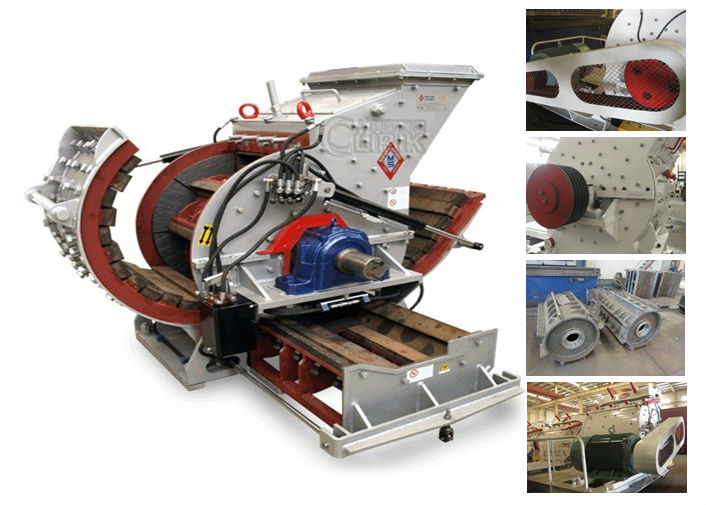
The material below 20mm is sent to the feeding hopper by the bucket elevator. The feeding hopper sends the material into the grinding chamber and falls on the grinding ring. The continuously rotating grinding ring gives the material a centrifugal force to move it to the outer circle. , into the grinding range of the grinding roller.
After grinding, the material falls from the edge of the grinding ring, is blown up by the hot air sent by the blower, and is separated by the cyclone separator. The qualified material leaves the grinding chamber, and the unqualified material falls back into the grinding ring.
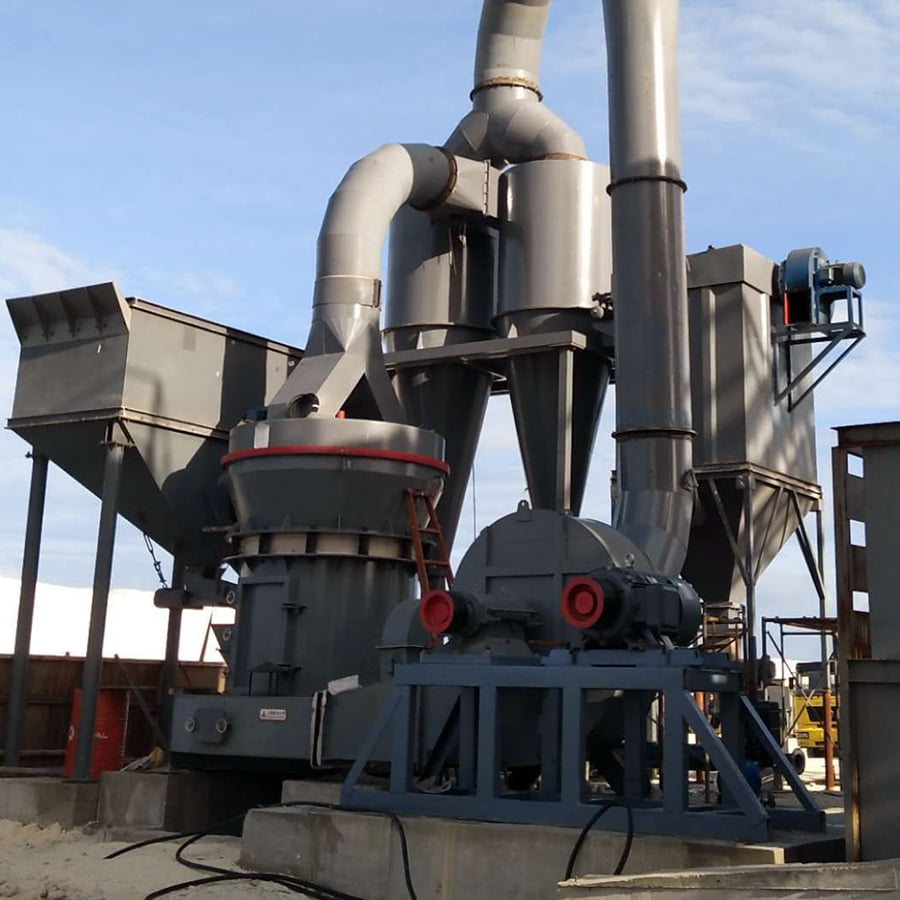
The high-pressure micro powder mill is an advanced version of the Raymond mill, which grinds materials by the extrusion force generated by the opposite rotation of two horizontally installed extrusion rollers. After the material enters the grinding chamber, the closed material layer moves downward under the action of gravity. During the movement, it is pressed into a cake by the pressure of the extrusion roller, and the cake contains a large amount of fine powder.
The feed particle size of the micro powder grinding mill is below 15-25mm, the finished product particle size is 0.125-0.010mm, and the production capacity is 0.2-12 tons per shift.
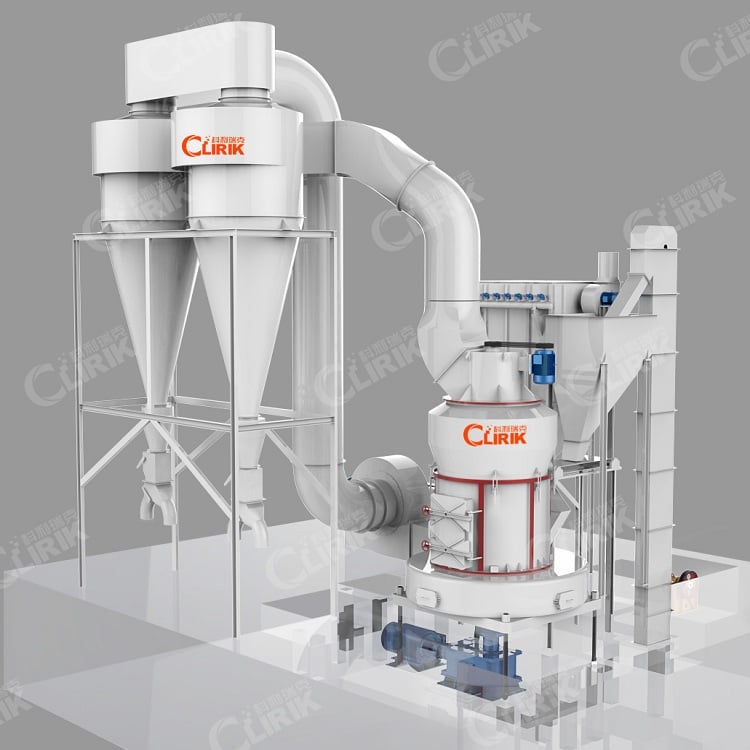
The three-ring/four-ring ultra-fine grinding mill grinds the material repeatedly through multiple loops to obtain ultra-fine powder efficiently.
The main part of the ultrafine grinding mill is composed of the main engine, the reducer, the analyzer, the fan, the bypass powder collector, the maintenance platform and the electric control cabinet. The auxiliary machine part consists of jaw crusher, bucket elevator, electromagnetic vibrating feeder, storage bin and so on.
The material enters the equipment, is thrown to the edge of the turntable, falls into the grinding chamber, and undergoes multiple grinding to become powder. The fan pulls the ground powder away, which is controlled by the powder concentrator. The powder that does not meet the requirements is returned to the machine cavity and ground again to become finer. The powder that can pass through the powder separator is the finished product, and the pulse dust collector separates the powder from the air to achieve the purpose of collection. The production process operates under negative pressure, and there is no dust spillage.
The fineness of the finished product of the ultrafine pulverizer is between 150-3000 mesh, and the output can reach up to 50 tons/hour.
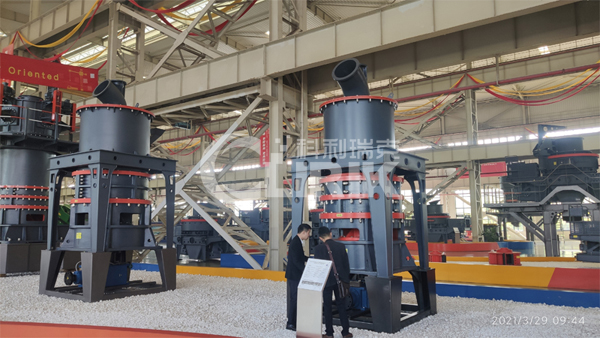
Vertical roller mill is a grinding equipment that integrates crushing, drying, grinding, grading and conveying. The grinding principle is similar to that of Raymond mill. The difference is that it can blow hot air into the grinding chamber, saving a The cost of the dryer.
The fineness of the finished product of the vertical roller mill is between 0.17-0.033mm, the model is from small to large, and the processing capacity can be from 10-40 tons per hour to 90-320 tons per hour.
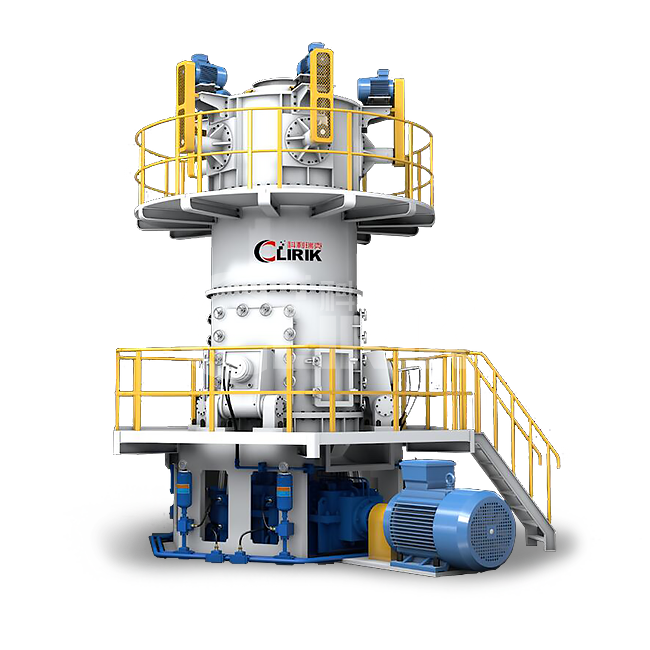
Shanghai CLIRIK Machinery Co.,Ltd. has been committed to the field of ultra-fine powder grinding machines for 20 years.
CLIRIK has a first-class manufacturing base with standardized and intelligent production lines.
CLIRIK's professional R&D, sales, installation and after-sales teams have provided door-to-door services to more than 100 countries and regions.
HGM grinding mill: 74-5 micron(200-2500 mesh); D97=5 micron
YGM Raymond mill: 613-33 micron(30-325 mesh); D90=30 micron
CLUM vertical roller mill: 20-5 micron(600-3000 mesh); D50=2 micron D97=4 micron
You can leave a message online or contact CLIRIK directly:
Email: sales@clirik.com
WhatsApp: +8613512155195/+8613917147829
